NORTH WALES COAST RAILWAY :NOTICE BOARD
Rheilffordd arfordir gogledd Cymru: Hysbysfwrdd
04 September 2023




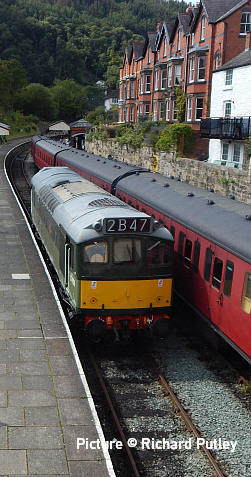
Contributions to the Notice Board are welcome, although they may not always be used, due to time constraints, especially if they don't follow the file name convention given on the Contributions Page.
Forthcoming events
Charter trains, and meetings, may be subject to cancellation or postponement. See our Calendar Page for Club and Society details.
September 2023
Friday 1 September
Clwyd Railway Circle
A Year in the Life of an International Train Spotter - Part 2. Phil Thomas
Wednesday 13 September Statesman Rail The Snowdonia Statesman High Wycombe IST Birmingham NS - Betws-y-coed/Blaenau Ffestiniog LSL Pullman
16-17 September : Bala Model Show Ysgol Godre'r Berwyn School, Ffrydan Road, Bala, Gwynedd LL23 7RU 10.00-16.00 both days
Approximately 20 layouts, half standard gauge, half narrow (including live steam).
13 September UK Railtours 'The Snowdonian' London Euston - Llandudno Junction and return
October 2023
Friday 6 October Clwyd Railway Circle A History of The Internal Railway at Shotton Steelworks and its Links with the Main Line. Glyn Jones
11 October Statesman Rail The Snowdonia Statesman Stevenage - Nuneaton - Betws-y-coed /Blaenau Ffestiniog LSL Pullman
November 2023
Friday 3 November Clwyd Railway Circle The Railway in Conway. Larry Davies
December 2023
Friday 1 December Clwyd Railway Circle Members Night Presentations. Members are invited to give a 15-minute presentation of their choice.
(see our Calendar page for meeting venues)
North Wales Coast Railway website created and compiled by Charlie Hulme
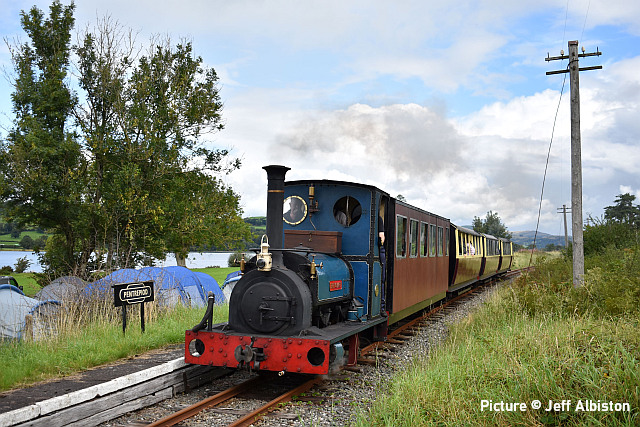
Visiting from the Ffestiniog Railway, Britomart passes Pentrepiod on the Bala Lake Railway. More images by Jeff Albiston below.
Selwyn Williams
We are saddened to hear of the death of Selwyn Williams, a keen observer of the North Wales railway scene, and long-time host of the North Wales Trains News online group. 'Sel' gave much support to this website in its early days; I never met him, as is the way of the Internet, but we offer our condolences to his family and friends.
News Pictures
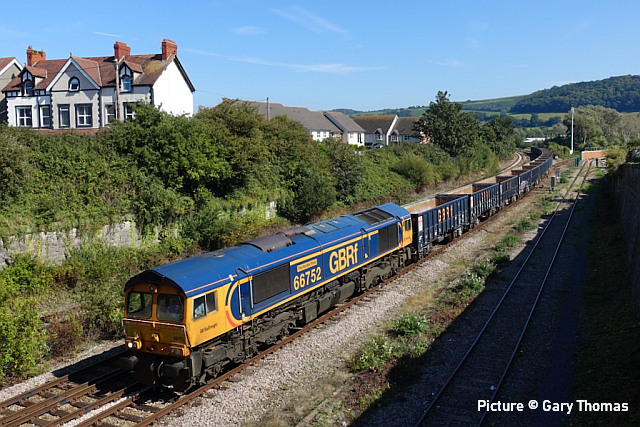
66 752 The Hoosier State arrives at Llandudno Junction with empty slate-waste wagons, 4 September. The name refers to Indiana, where this and others were built Progress Rail's factory in Muncie.
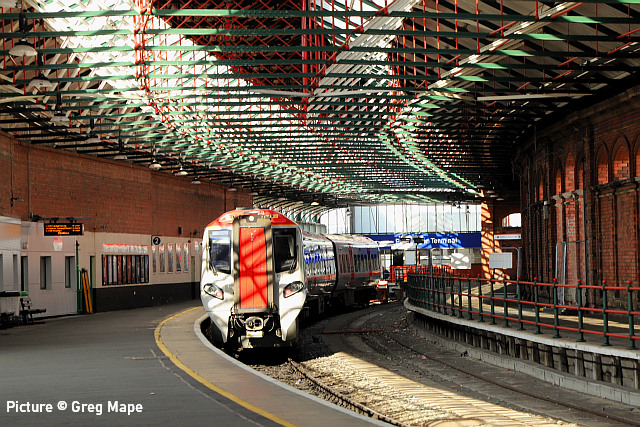
Transport for Wales operated a train service on 2 September, whilst English companies faced yet another strike. 197 104 stands in Platform 2 having worked the 07:33 from Cardiff...

... while three Avanti voyagers as well as 67 015 with its coaches stabled in the sidings (Greg Mape).
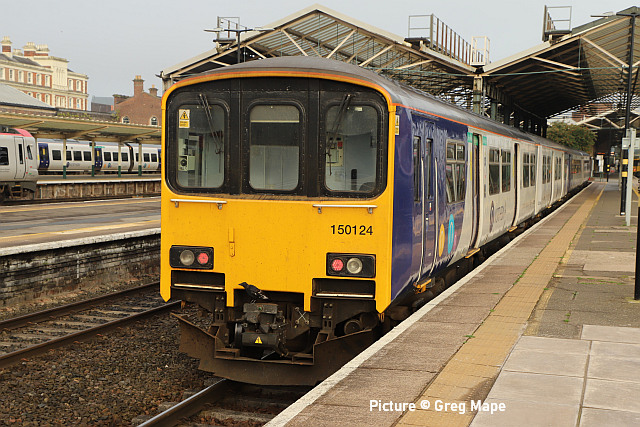
At Chester on 1 September, a bird hopes for a ride on strike-bound 150 124 (Greg Mape)
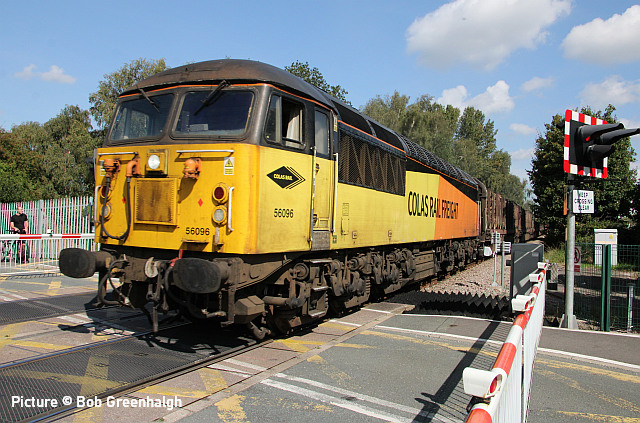
Sunday 3 September saw a run of the Aberystwyth - Chirk log train, captured at Green Lane Crossing by Bob Greenhalgh with 56 096 in charge.
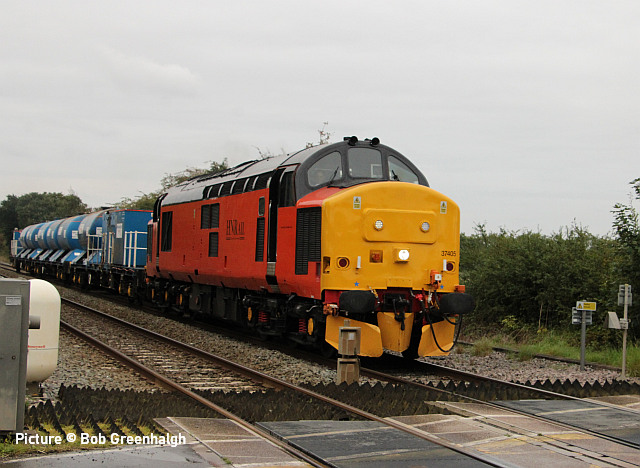
Thursday 31 August saw an immaculate 37 405 head the Rail Head Treatment Train wagons to Shrewsbury. How fast this year is passing! Seen passing over Balderton crossing by Bob Greenhalgh.
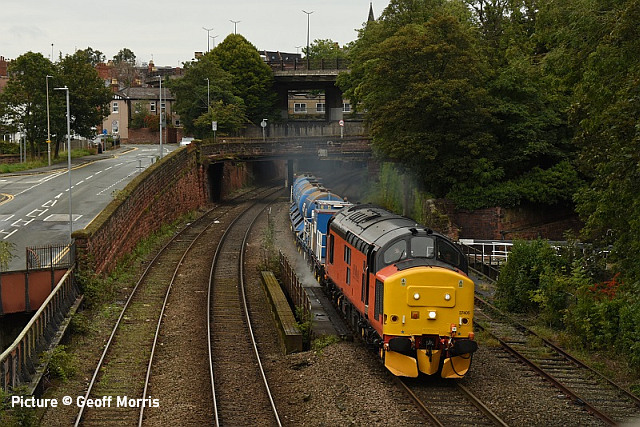
Another view of the RHTT train passing Chester Locks, with sprayers in action (Geoff Morris).
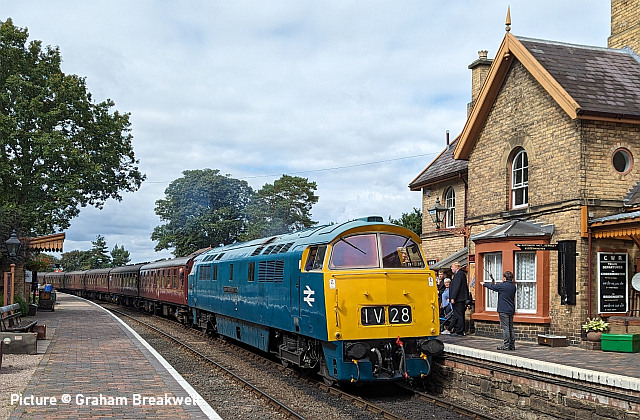
Not North Wales, but a fine view by Graham Breakwell of D1062 Western Courier pulling into Arley station on the Severn Valley on 28 August.
Some other news: Overnight on 4 September Avanti 805s are due to begin multiple appearances on Chester to Rhyl tests and we should have a Class 37 on a test train on Wednesday and Thursday.
'Pacer' 142 003, owned by Locomotive Services is to run a railtour from Wilmslow to Llandudno on 27 September. Details here. Whatever next? More madness: TransPennine have decided to cease using their 13 Class 68-hauled trains from the December timetable change, on the ground that they are too much trouble.
Barmouth scenes - by Kate Jones
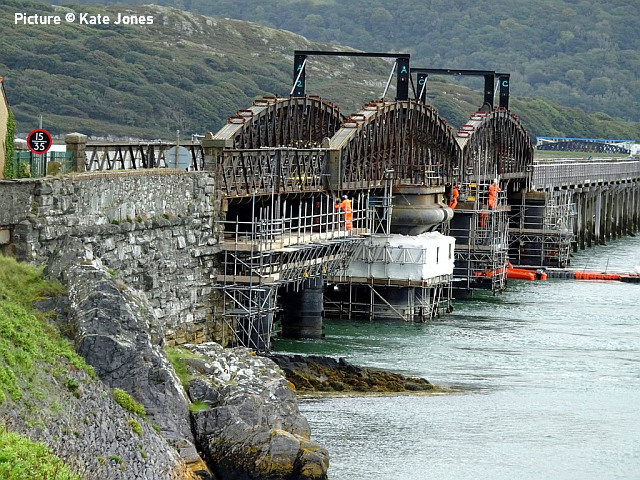
The scene on 30 August. Scaffolding going higher on the old bridge.
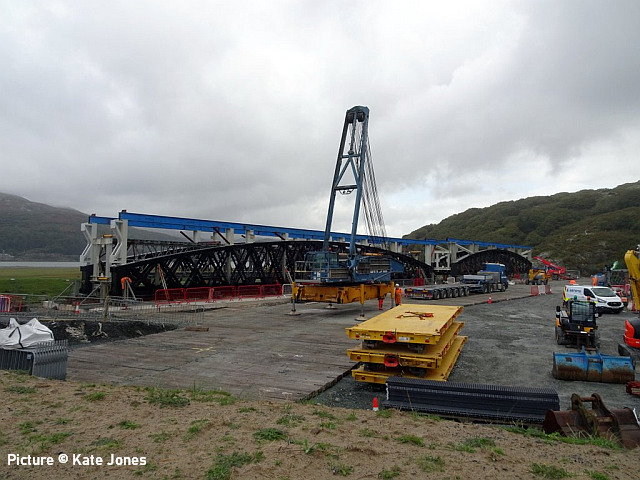
Machinery is getting bigger at the compound.
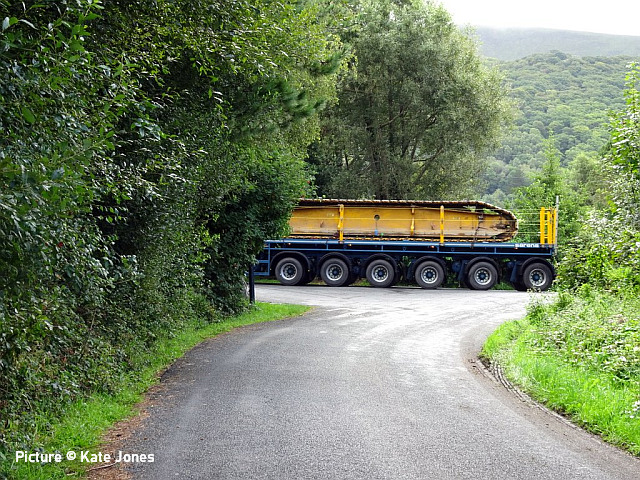
The tracks for the new crane came on two separate vehicles they are so big.
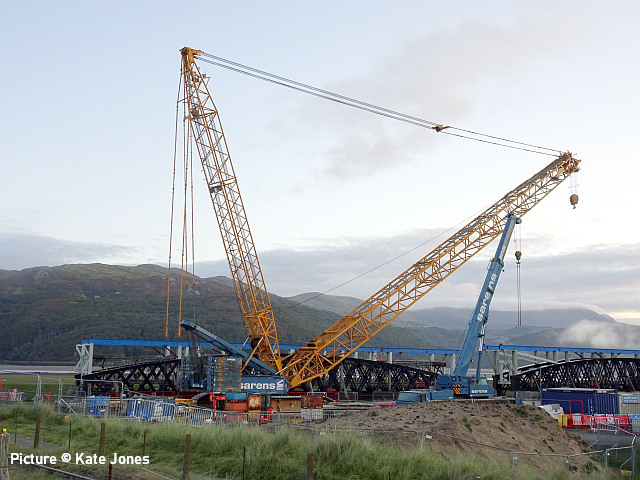
The scene on 1 September at the work site at Barmouth Viaduct, the big crane is erected (Kate Jones). The line from Machynlleth to Pwllheli is now closed to traffic until 3 December, with bus substitutions. Is there a timetable for the buses? It's not obvious on the TfW website.
Steam Gala at Bala, 26 August - Pictures by Jeff Albiston
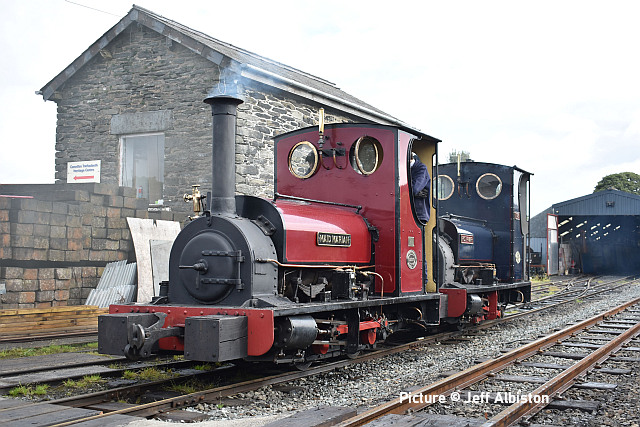
Maid Marian & Holy War getting ready for their first trains of the day.
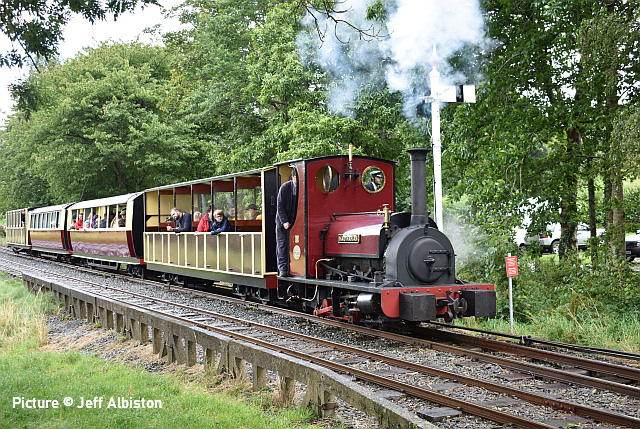
Maid Marian departing from Llangower loop with a train for Llanuwchllyn.
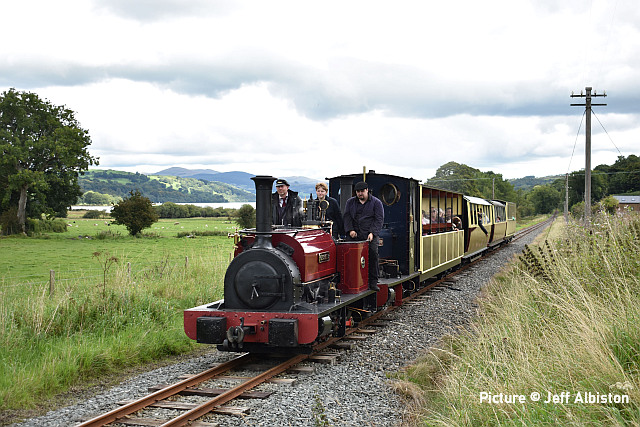
George B & Holy War climbing up Dolfawr bank.
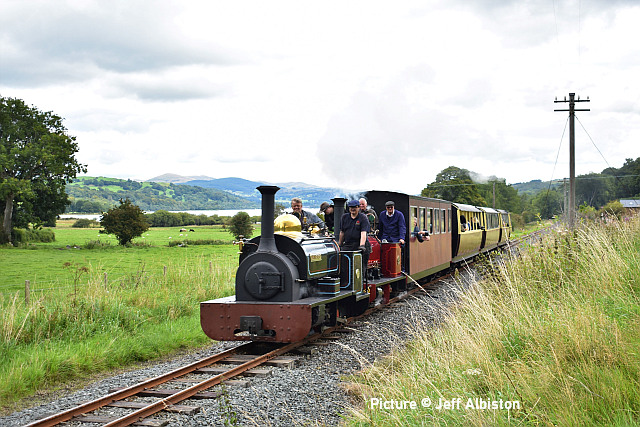
Winifred and Alice on Dolfawr bank.
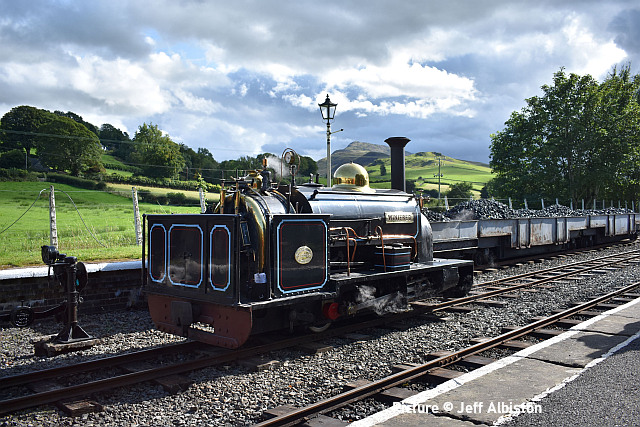
Winifred basking in the afternoon sun at Llanuwchllyn.
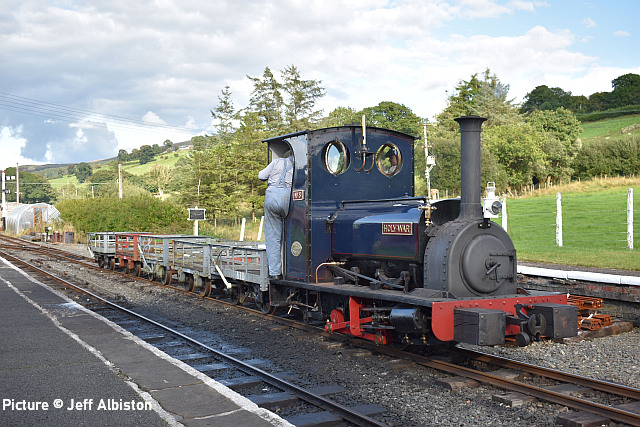
Holy War with the slate wagons at Llanuwchllyn.
More on the mystery images
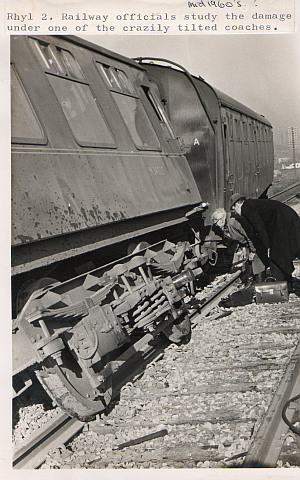 Firstly,
red face department - we have to admit that the images of
the Class 27 has actually been here before, and can be found
in our online archive of 24th September 2013 complete with
caption Thanks to Alan Haydock for that information. Never
thought of that...
Firstly,
red face department - we have to admit that the images of
the Class 27 has actually been here before, and can be found
in our online archive of 24th September 2013 complete with
caption Thanks to Alan Haydock for that information. Never
thought of that...Passing on quickly to the other question, we do now have the solution, about the derailment. Philip Evans writes:
'The incident referred to took place around 03:40 on Monday 29 March 1965. The train was the 02:38 ("Mail Bach") from Crewe to Holyhead which also conveyed two Post Office sorting vans. The train was being switched from the fast to the slow line at the approach to Bagillt station. One vehicle seemed to have struck the platform edge. I recall being told about it by the late David Jones, a signalman at Bagillt at the time and who later worked at Mostyn Box. The five rear coaches were derailed and leant over towards the old flushing pond on the down side.'
Keith Stewart writes: 'The train concerned was the service from Crewe to Holyhead. It did consist of mail, parcels and passenger vehicles (I once travelled home on leave on it). I remember reading in the local press that it was being driven by a Chester driver.'
Keith also mentions another derailment: 'Way back in the mid/late 1950s we were travelling home from holiday in North Wales and from Llandudno Junction onwards there were long delays. We eventually arrived in Rhyl on the down platform and I remember a solo coach with a derailed bogie in the up platform. From conversations with people who joined our train here several up trains had been cancelled and when we made Chester I remember people saying that it had taken four hours (!) to get this far.'
Class 25 to Corwen - report by Richard Putley
I decided I wanted to see visiting Class 25 diesel loco D7659 in action on the Llangollen. I decided to drive to Corwen where I soon found the car park despite the lack of signposting from the main road. There were plenty of spaces available plus the Parking Meters accept cash – which a lot do not nowadays.
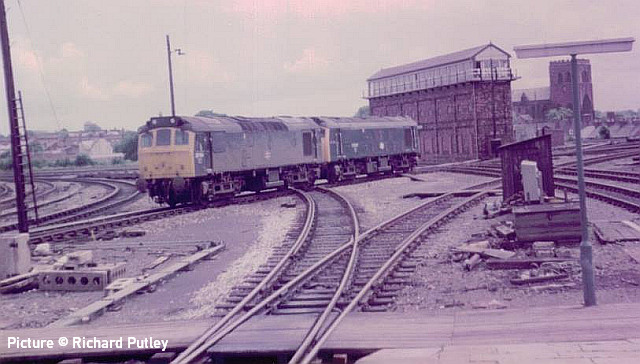
I recall seeing these locos in use on the Cambrian back in the 1970s and 1980s. One such time was Saturday 26 June. On that day my family and I travelled on the direct London Euston to Aberystwyth train as far as Machynlleth (from where we took the connecting train to Harlech). From Wolverhampton that train was hauled by 25 194 and 25 235, seen running round at Shrewsbury.
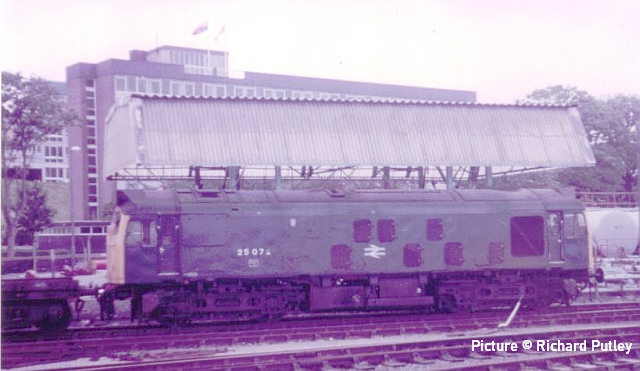
Also that week I photographed 25 072 at Aberystwyth. Was this really over 40 years ago?
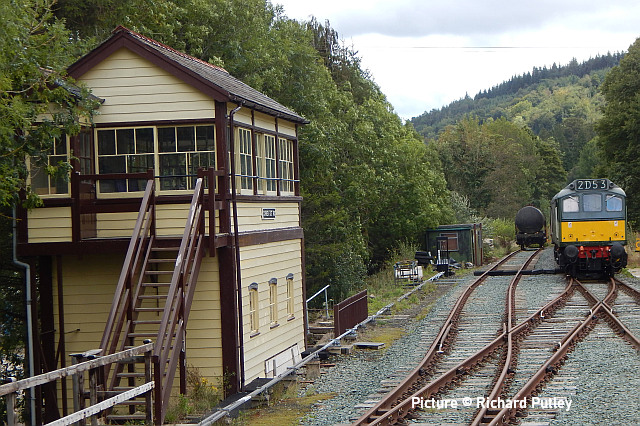
Meanwhile back to the present. I arrived at Corwen in good time for the 13:05 diesel hauled service to Llangollen. Sure enough D7659 arrived and I photographed it approaching past the Signalbox. The train was formed of the Mk1 Suburban coaches. I couldn’t help wondering if the headcode displayed, 2D53 was a nod to Dave Plimmer’s North Wales Railways website ? After photographing the loco run round I managed to get a compartment to myself.
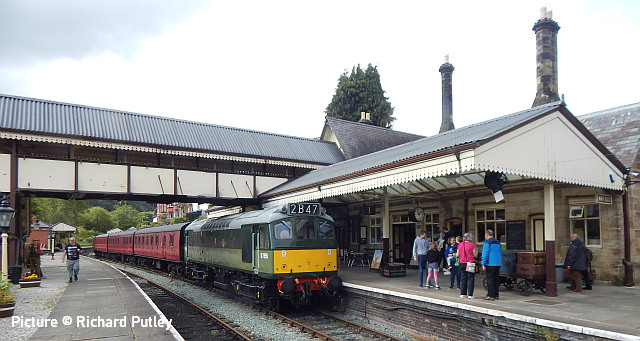
On arrival at Llangollen I had time to cross the footbridge and photograph the train before the Secondman had uncoupled the loco.
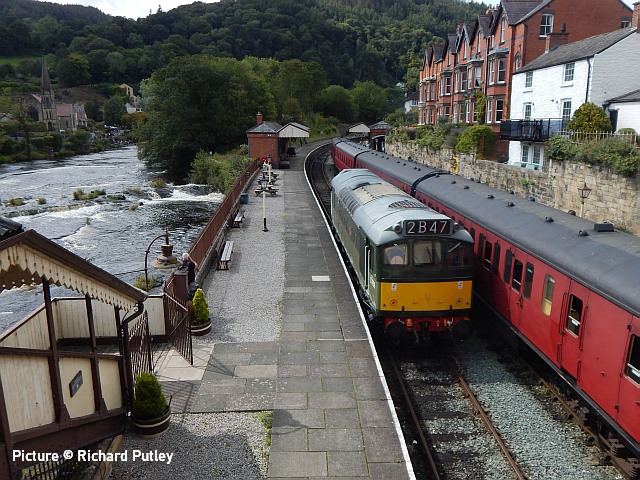
After watching it run round, I boarded the 14:35 Diesel hauled service from Llangollen back to Carrog. Again I had a compartment to myself.
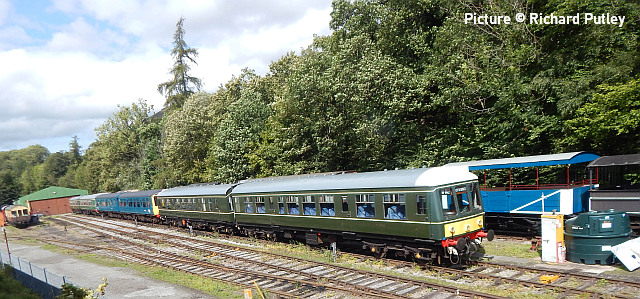
I photographed three DMUs at Pentre Felin sidings all coupled up. Reminds me of some of the lash ups we used to see on the Cambrian.
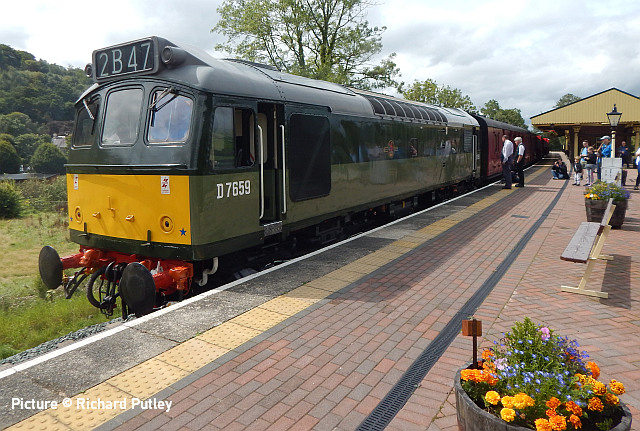
On my return to Corwen I found a tea shop for 'Tea and Scones'. I am happy to say I think the car park there is a big improvement on the arrangements at Llangollen. It’s also a good place for Bus Spotting at the Bus Station is at the opposite end of it.
From Dave Sallery's archive
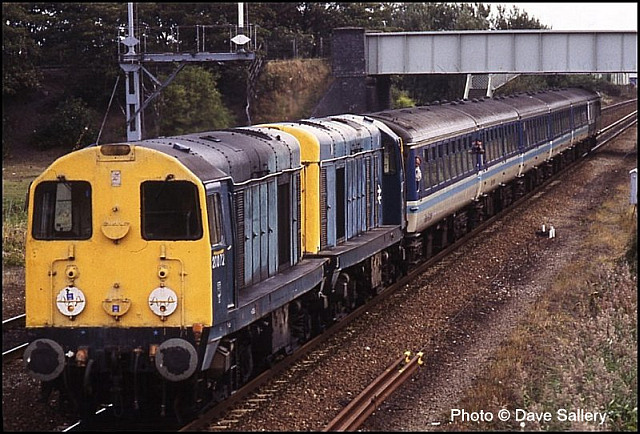
20 072 and 20 187 on the Derby - Llandudno train near Prestatyn, 25 September 1991.
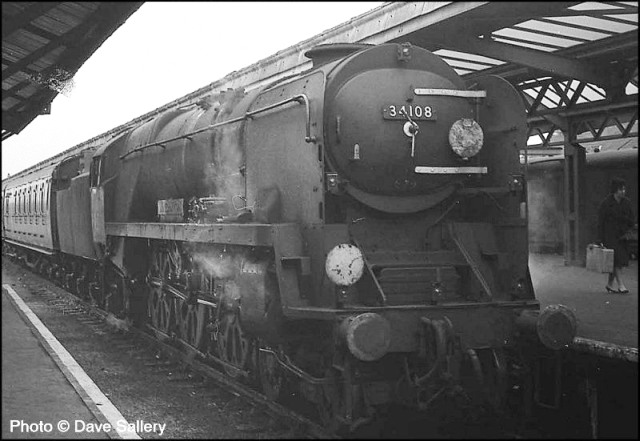
34108 at Weymouth after arrival on a local from Bournemouth in 1966. Wincanton was built by BR in Brighton in April 1950 and withdrawn in June 1967.
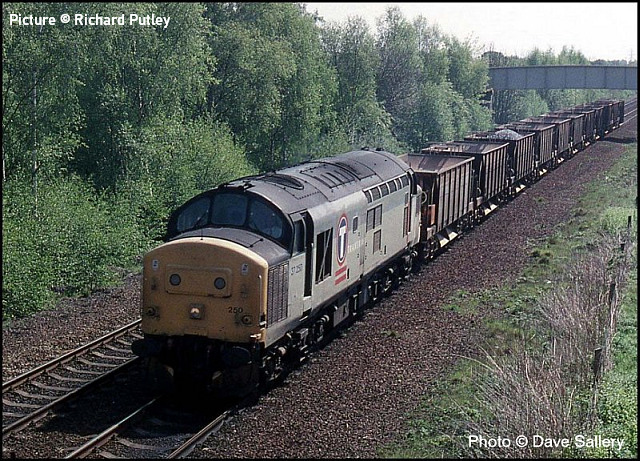
37 250 on ballast empties to Penmaenmawr at Shotton, 30 April 1997. Note that not all the wagons are empty, a frequent occurrence before 'virtual quarries'.
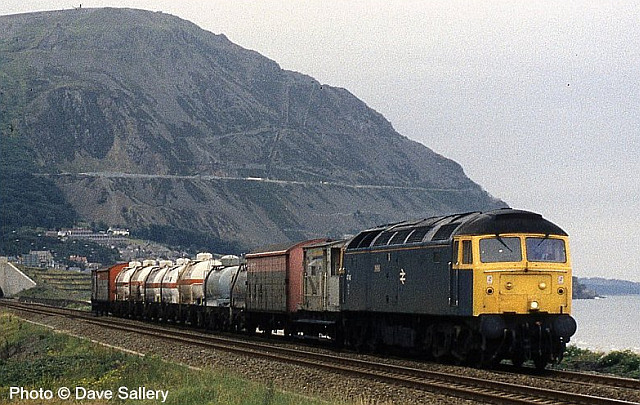
47 146 on the Amlwch to Ellesmere Port Octel service at Penmaenmawr, 15 February 1988.
Looking back: Not the usual steam locomotives part 3 - by David Pool
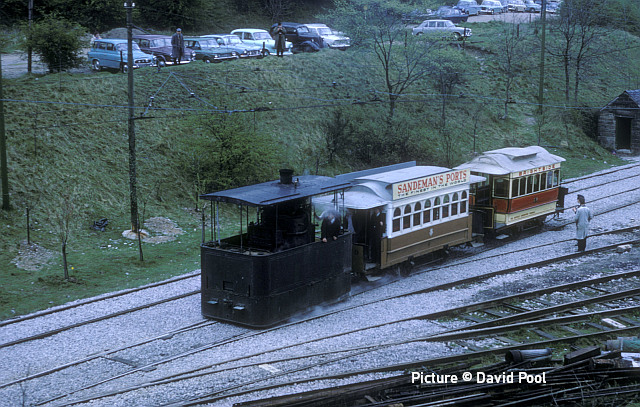
The Manchester firm of Beyer Peacock built steam tram locomotives in addition to their other steam locomotives. No.47 was a steam tram built in 1885 and sent to Sydney in Australia as a demonstration vehicle, carrying the name John Bull. Due to poor steaming and a heavy fuel consumption it was not a success, and returned to Beyer Peacock in 1890, where it was used as a Works Shunter until 1959.
Crich Tramway opened to the public in 1963 with an expanding fleet of preserved trams. On 28 April 1968 No.47 was in steam, hauling Oporto No.9 and Sheffield No.15 as trailers. The Oporto tram was built by Starbuck in 1873, and is the oldest vehicle at Crich. The Sheffield tram is now used as an unpowered trailer.
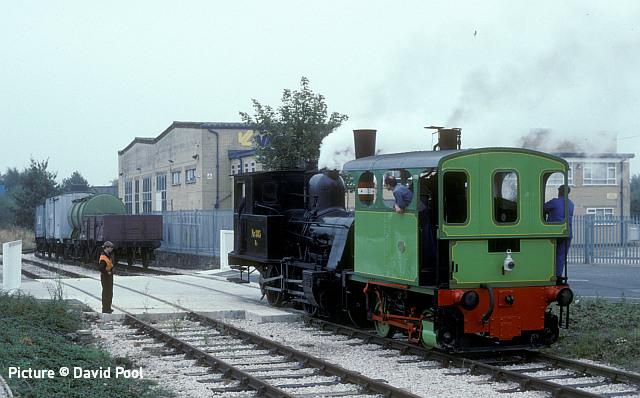
Lucie, the steam tram built in 1890 by the John Cockerill Company for the East Brussels Tram Company in Belgium, is now well known after recent visits to several preserved railways from its new base at the North Yorkshire Moors Railway with its new owner “Piglet”. On 26 September 1998 it was based at the Middleton Railway, giving shunting demonstrations on the Balm Road branch together with the Danish steam locomotive No.385.
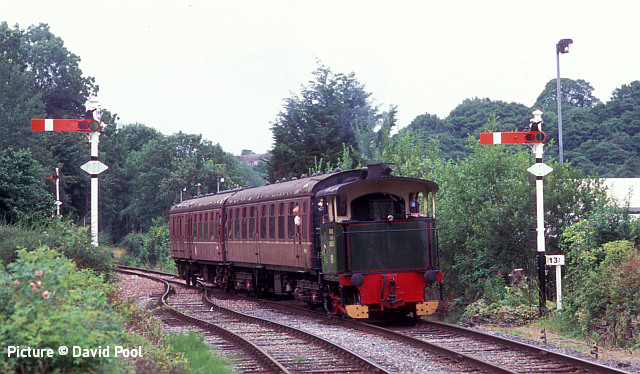
At that time Lucie was in a plain green livery, but now is fully decorated with the Belgian lettering. In June this year it went to the East Lancs Railway, and after double heading or top and tailing trains at the Small Engines Steam Gala it was allowed out with its own two coach train, here approaching Ramsbottom on 8 July 2023.
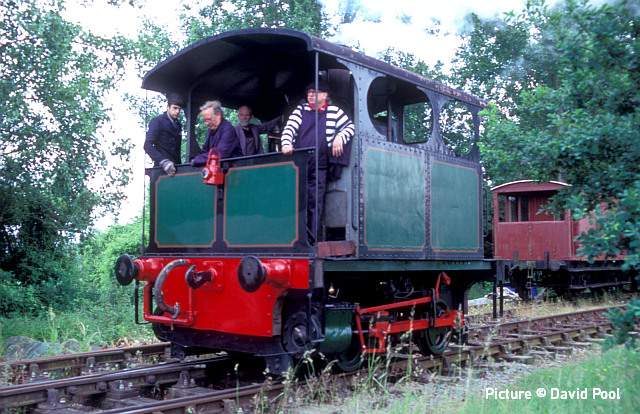
Another steam tram is to be found in East Anglia, where Cockerill No. 2525 (1906) has been restored. On 19 June 2016 it was on the Mid Suffolk Light Railway, where one of the footplate crew was dressed in what I assume to be Belgian attire.
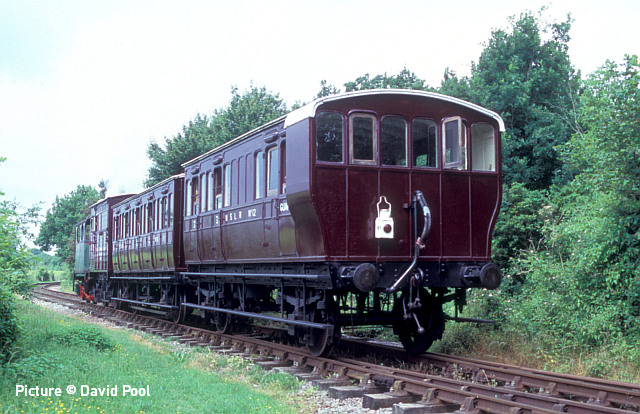
The Mid Suffolk Light Railway has relatively few items of rolling stock, but has sought to represent the typical stock of the Railway in the early 20th century. The coaches being hauled by the steam tram were MSLR No.12, being a Great Eastern Railway four-wheeled coach with two third class compartments and a brake compartment for the guard and luggage. The end windows are particularly striking. A second GER coach is No.13, which has been modified to have first and third class compartments. The other vehicle is a GER Horse Box, numbered as MSLR No.15, which dates from 1869 and is claimed to be the oldest Horse Box in the country.
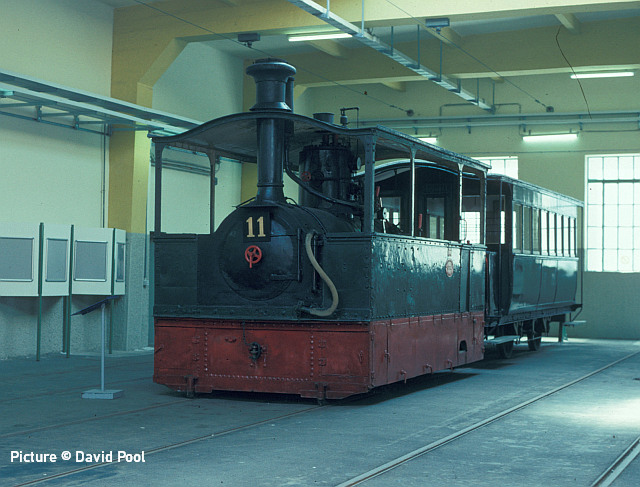
In Austria, Krauss of Linz was a builder of steam trams, and Krauss and Co. operated a steam tramway in Vienna at the end of the 19th century, before the city took over the tramway systems. On display in the Vienna Tramway Museum at Erdberg on 21 June 1992 was Krauss No.11, dating from 1885, with a Semmering built trailer No.72 from 1886.
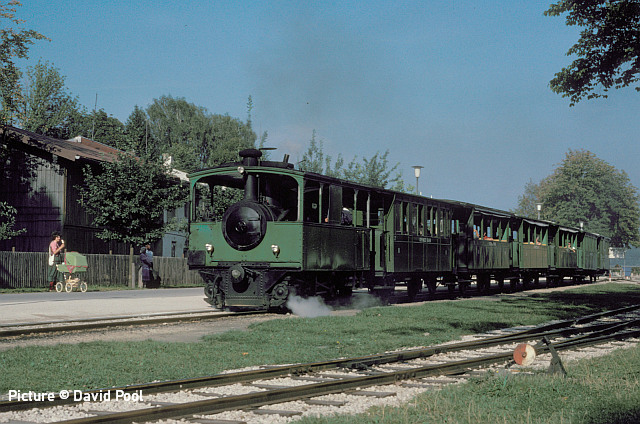
There can be no other steam trams which can match the working life of No.1 on the Chiemseebahn in Bavaria. A metre gauge tramway was built from the main line station in Prien, near Munich, the motive power being No.1 Laura, built by Krauss of Munich in 1887, Works No 1813. This locomotive has worked ever since on the line, although since 1982 a Deutz diesel locomotive has also been used. The line is about one mile long, running from Prien am Chiemsee to Prien Stock, which is the harbour for the passenger ships taking tourists to the Herreninsel and King Ludwig’s Schloss Herrenchiemsee. No.1 is about to return from the harbour on 18 September 1979. The six coaches would present no problem to No.1, as the line is basically flat, and the maximum speed of 25 km/hour is easily attained.
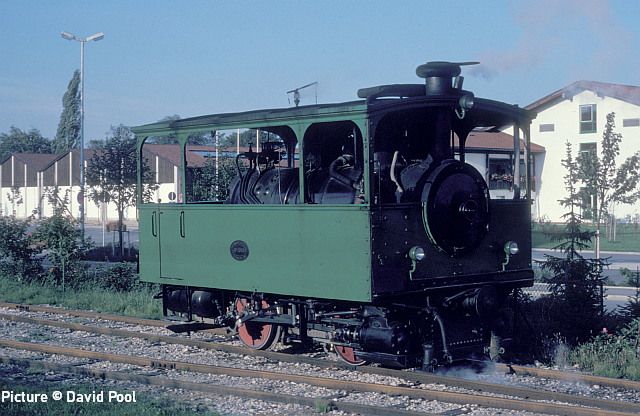
A side view of No.1 illustrates the horizontal boiler of the Krauss locomotives, this arrangement being similar to that of the LNER Class Y6 steam tram locomotives on the famous Wisbech and Upwell Tramway, none of which have survived today.
Not the usual steam loco: feedback by Geoff Monks
I can answer David Pool's queries about the various industrials in the 21 August North Wales Coast edition, as follows :
Neilson 4444/1892 is for sale for £40,000 at Preston Services, Canterbury (a dealer in locomotives and railway equipment).
Neilson 1561/1870 is still at Penrhyn Castle as far as I know although there have been reports that the museum may be reducing its railway collection.
The loco in David's bottom picture is Neilson 5087/1896, not 6087 (a typo?).
Further up the page, the IRS have always quoted the ex-Brill Aveling & Porter "loco" as AP 807/1872, not AP 546. I saw this loco at Quainton Road (Buckinghamshire Railway Museum) last year and verified that it carries plates AP 807/1872.
AP 3567/1895 was at Chatham Dockyard for a time but as far as I know, it is now at the Buckingham Railway Centre. I did not see it there last year but the workshops were locked up and it may have been in there.
North Wales Coast home page | Archive | Previous Notice Board